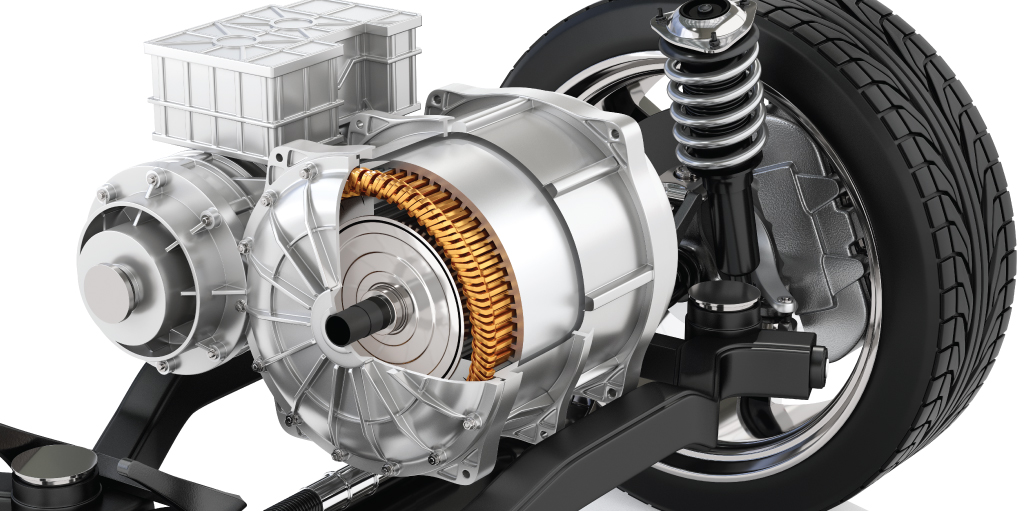For the past few years, electric vehicles have been an exceptionally hot topic. More and more consumers are choosing to purchase electric vehicles, and in response, automotive companies are racing to design and manufacture more electric vehicles for consumers to choose from. Currently, projections expect the number of electric cars on the road to swell to 250 million. This is a massive growth projection expected to occur in an incredibly short amount of time.
Industry analysts predict that there will be increased pressure on the supply of key raw materials to meet a rising demand for electric vehicles. Rare earth minerals, including rare earth magnets, are a critical element of electric vehicles.
Rare earth magnets play a critical role in all types of vehicles. Whether a vehicle is powered by combustion or an electric engine, rare earth magnets are present and essential to many key functions. In this article, we will examine how rare earth magnets are used in electric vehicle motors.
Magnets in Motors
Battery-driven electric vehicles get propulsion from electric motors as opposed to an internal combustion engine. A large traction battery pack is the source of the power required to drive the electric motor. In order to preserve and maximize battery life, the electric motor must be able to achieve the highest level of efficiency possible.
Rare earth magnets are a main component found in electric motors. Motors operate when a coil of wire, encircled by powerful magnets, spins. A magnetic field is emitted by the electric current induced in a coil, which opposes the magnetic field being emitted by the powerful magnets surrounding the wire coil. The result is a repulsive effect, similar to what you see when two north-pole magnets are placed next to each other.
This repulsion enables the coil to rotate or spin at a high speed. When the coil is attached to an axle, this rotation drives the wheels of the vehicle.
Magnet Selection
There are multiple key design criteria to consider when selecting a magnet for any given automotive application. Below, we will discuss some of these criteria.
Magnetic Force
When used in motors, a permanent magnet must have a magnetic field powerful enough to generate a sufficiently strong repulsive effect. Currently, the most powerful permanent magnets available are neodymium iron boron magnets and samarium cobalt magnets. Both neodymium iron boron and samarium cobalt magnets belong to the category of rare earth magnets.
Heat
When the coil and the magnet of the motor interact, heat is generated. All permanent magnets have their performance adversely affected by heat, so it is important to select an appropriate magnet material and grade in order to ensure long term performance.
Size
Motors in automotive applications must be energy dense and cost efficient, while keeping the overall space envelope as small as possible. For this reason, the most suitable magnet must be as powerful as possible while also remaining as small as possible.
As electric vehicles present new demands and challenges, magnet technology continues to evolve to meet the needs of the industry. Currently, rare earth neodymium iron boron magnets are considered the optimum magnet (in terms of strength and size) for use in motors for electric vehicles as well as hybrid vehicles.
Amount of Rare Earth Magnets in Hybrid and Electric Vehicles
An average hybrid or electric vehicle will use between 4 to 12 pounds of rare earth magnets, depending on the design. Rare earth magnets are found in many parts of vehicles, including:
- Heating, ventilation, and air conditioning (HVAC) systems
- Transmission, steering, and brakes
- Hybrid engine or electric motor compartment
- Sensors, such as those used for seats, security, cameras, etc.
- Window and door controls
- Entertainment systems (speakers, radio, etc.)
- Electric vehicle batteries
- Fuel and exhaust systems for hybrids
The Future of Rare Earth Magnets and Electric Vehicles
It is expected that by 2030, the growth in demand for electric vehicles will result in a similarly increased demand for magnetic systems. Neodymium magnets are expected to continue to play a key role in the design of hybrid engines as well as electric motor compartments. In order to keep up with this projected increase in demand for neodymium to be used in electric vehicles, market analysts expect:
- Increased output by China and other neodymium producers
- Development of new reserves of neodymium
- Increased recycling of neodymium magnets used in electronics, vehicles, and other applications
Bunting-DuBois has a great deal of expertise in the design and manufacture of custom magnets and magnetic assemblies for the automotive industry, including for electric vehicles. For more information about our capabilities, contact us today.

